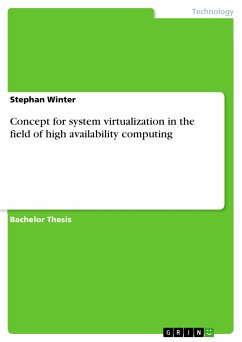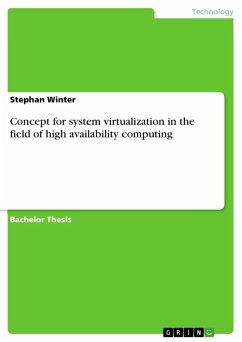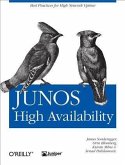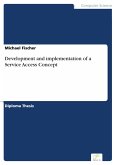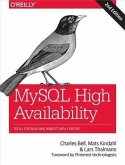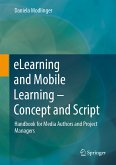Bachelor Thesis from the year 2007 in the subject Computer Science - Software, University of Paderborn, language: English, abstract: Server virtualization is currently a field of IT which is undergoing a rapid development. Introducing an even spread of performance on server farms which results in a good TCO (total cost of ownership), virtualization has already got the full attention from industry, resulting in massive participation and huge acquisitions. With server virtualization the size of server farms can be reduced dramatically, resulting in a lower total cost of ownership and (by using techniques like Linux-HA in virtual environments) increased availability. Even with an overhead of 10-20% on the layer of virtualization it is still very interesting since the load on a server farm can be spread evenly (which is not only a main target in server virtualization but also in distributed systems in general). This work will give an insight on the current developments in the field of server virtualization and the various techniques involved in it as well as a short historical overview about when the first types of virtualization were introduced (and why they failed, since according to A. Tanenbaum the current hardware is not made to be virtualized). The findings will mostly be supported by examples of current virtual environments (especially the XEN project). The paper will first introduce the different ways of virtualizing a system and in how far hardware can or can not support this. The second part will introduce the current software for virtualizing a server and giving users their own separated environment, starting from early approaches like BSD jails to the Linux V-Server and XEN Project. The last chapter will cover the use of server virtualization in high-availability environments. With the use of n physical machines and m virtualized systems on each machine, an environment of (n * m) / x can be created, where x is the level of redundancy (e.g. x = 2 for mirroring). Most interesting is how virtual environments can be moved from one physical machine to another one without switching it off. The summary will give some insight on the current use of virtual environments and in how far they provide advantages over solutions like Mosix, Application-basic virtualization and the grid. It will also give an outlook on further developments especially in the field of hardware support for virtualization.
Bitte wählen Sie Ihr Anliegen aus.
Rechnungen
Retourenschein anfordern
Bestellstatus
Storno

